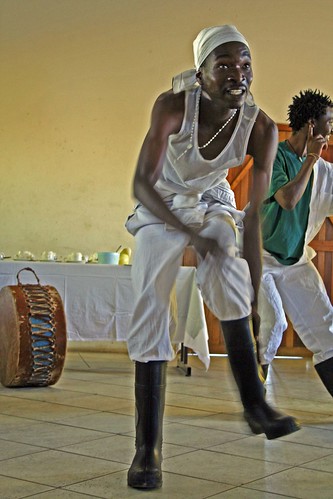Step In The Name of Love | Gumboot Dancing History in South Africa
Strolls, Step Shows, Stomping the Yard in Africa
Gumboot Dancing history performed in South Africa by dancers wearing wellington boots.
 |
| Top Shayela gumboot dancers of South Africa |
The History of Gumboot Dancing
Explore and Understand Africa Through Her Food and Culture
Step in the name of love; today gumboot dancing is more popular than ever across the world especially in African American college Fraternities and Sororities
During the apartheid era gold mining was big
business in South Africa. Black miners worked underground in terrible
conditions, digging for gold for low wages. They carried out the most dangerous
dirtiest jobs in the mines and the safety of the workers during the time was
not a high priority.
Small mining villages which later grew into
larger settlements, towns and cities grew up around the gold mining industry. One of the first settlements was Johannesburg, also known as Egoli or the Place of
Gold.
The two most common methods in South Africa for
mining gold are panning and shaft mining. Shaft mining is a dangerous operation
due to the intense heat, most black miners were hired for shaft mining work.
Gold mining consumes large amounts of water and flooding became a problem to the employer due to low production from the workers due to air and water borne illnesses. Acid and other chemicals in the water from gold processing were poisoning the shaft mine workers as well as harmful gases were contributing to air pollution causing breathing problems.
Gold mining consumes large amounts of water and flooding became a problem to the employer due to low production from the workers due to air and water borne illnesses. Acid and other chemicals in the water from gold processing were poisoning the shaft mine workers as well as harmful gases were contributing to air pollution causing breathing problems.
Arthur Wellesley won his battle over Napoleon at
the Battle of Waterloo in 1815; Arthur Wellesley shoes became a fashion
statement known as Wellingtons.
In 1856 the North British Rubber Company started to manufacture Britain’s first rubber or ‘gum’ boots also known as Wellington boots. The rubber boots had a long history of relieving the issue of trench foot in World War I. Trench foot is a skin disease caused by prolonged exposure of feet to wet and damp conditions.
At the end of the war in 1918, soldiers brought the gumboots home and wore them for work for farming, fishing and other wet dirty jobs. Therefore, a solution to the low production of the gold shaft mine workers was to mandate gumboots as a part of the daily uniform.
In 1856 the North British Rubber Company started to manufacture Britain’s first rubber or ‘gum’ boots also known as Wellington boots. The rubber boots had a long history of relieving the issue of trench foot in World War I. Trench foot is a skin disease caused by prolonged exposure of feet to wet and damp conditions.
At the end of the war in 1918, soldiers brought the gumboots home and wore them for work for farming, fishing and other wet dirty jobs. Therefore, a solution to the low production of the gold shaft mine workers was to mandate gumboots as a part of the daily uniform.
Gold mine tunnels were dark places where electricity
was spotty if it existed or was allowed but communication critical. It did not take long for the shaft miners
to create a language of their own by slapping, stomping and scuffling their boots
creating newly found dancing language.
Shells, bells and other decorative items were attached to the boots when possible giving workers their own unique tribal identity. Soon hand claps and rhythms using the whole body were incorporated with the gumboot stepping.
Gumboot workers were easily recognized
on the streets of South Africa due to their unique footwear and the gumboot became a fashion statement. Soon the gumboot dances and songs made their way out of the South African gold mines and into the culture of South Africa’s youth.
Today gumboot dancing is more popular than ever across the world especially to African American college Fraternities and Sororities who drew on portions of gumboot as part of the ongoing legacy of the historic African American stepping tradition.
Today gumboot dancing is more popular than ever across the world especially to African American college Fraternities and Sororities who drew on portions of gumboot as part of the ongoing legacy of the historic African American stepping tradition.







